The Impact of Elephants on Large Trees
- Lisbeth
- Site Admin
- Posts: 67592
- Joined: Sat May 19, 2012 12:31 pm
- Country: Switzerland
- Location: Lugano
- Contact:
Re: The Impact of Elephants on Large Trees
That sounds rather serious 
"Education is the most powerful weapon which you can use to change the world." Nelson Mandela
The desire for equality must never exceed the demands of knowledge
The desire for equality must never exceed the demands of knowledge
- Richprins
- Committee Member
- Posts: 76116
- Joined: Sat May 19, 2012 3:52 pm
- Location: NELSPRUIT
- Contact:
Re: The Impact of Elephants on Large Trees
Hear hear! 

Please check Needs Attention pre-booking: https://africawild-forum.com/viewtopic.php?f=322&t=596
- Lisbeth
- Site Admin
- Posts: 67592
- Joined: Sat May 19, 2012 12:31 pm
- Country: Switzerland
- Location: Lugano
- Contact:
Re: The Impact of Elephants on Large Trees
(This is the same subject as the post by Klipspringer, but with a personal touch of the writer)
We all love elephants, and most of us love big trees - in this case, fan palms. How then should we feel about this study that says that Kruger elephants are in effect KILLING OFF these palm trees?
“Living dead” – elephants in Kruger NP are sterilizing palm trees, says research
Posted on August 24, 2020 by Team Africa Geographic in the DECODING SCIENCE post series.
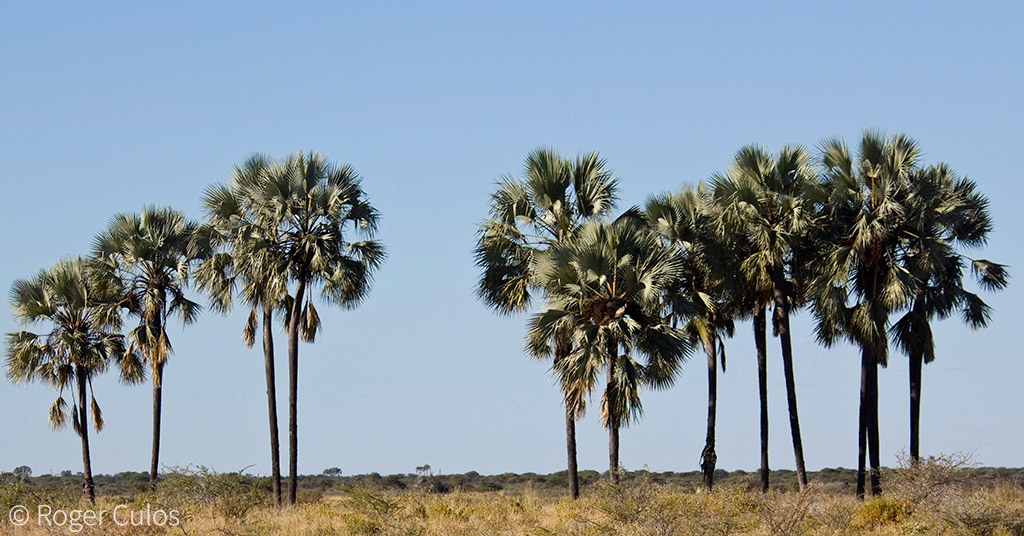
Elephant feeding patterns are preventing fan palms (Hyphaene petersiana) from reaching full size and reproductive potential, says a new study.
Many plant species that are subject to elephant feeding are capable of resprouting, which makes evaluating the effects of elephant feeding more difficult because, while the height of plants may be reduced, they will still be present, often in high densities. While previous studies into the impact of elephant feeding have focussed on the presence, height or stem density of savanna plants, the authors of this study suggest that it is also essential to evaluate the reproductive condition of plants.
The management of elephant numbers in the Kruger National Park in South Africa, where the population has demonstrated a consistent increase in the last two decades, is a controversial subject. High numbers of elephants can result in the widespread conversion of woodlands to grasslands. Some species of plants, such as the baobab (Adansonia digitata) and several Acacia species are intolerant of consistent elephant feeding. Yet, other plant species rely on the presence of elephants for seed dispersal. The tolerance of many savanna plants in the face of elephant disturbance and their capacity to resprout from the base, stem or roots further complicates the debate, as conservation managers work to determine what constitutes ideal savanna vegetation. As a result, determining the carrying capacity of the KNP for elephants is extremely complex.
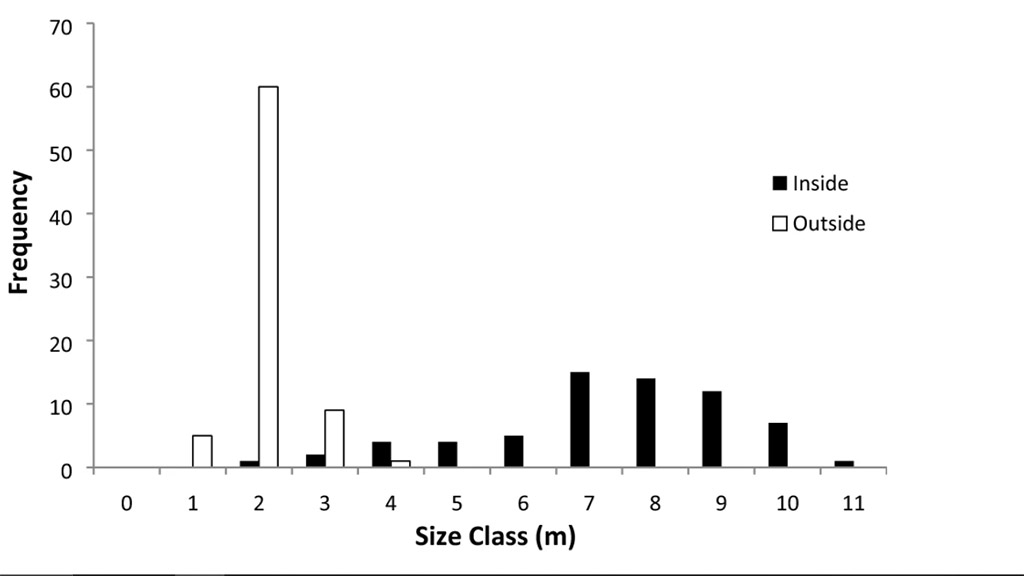
The researchers, in this case, chose to focus on the H. petersiana palm species because they are both browsed by elephants and their seeds are dispersed in this manner. The plant demonstrates prolific production of new stems in response to feeding damage and was previously believed to be resistant to elephant feeding damage because the stem densities of browsed plants were wider than those protected from elephant herbivory.
However, most plants need to reach a minimum size to be able to reproduce. Researchers compared palms within the Nwaxitshumbe enclosure (one of the rare antelope breeding camps where the plants have been protected from elephant feeding for several decades) with palm trees outside the enclosure, which had evidence of extensive elephant feeding damage. Of the 65 trees in the enclosure, 92% had reached maturity at heights of between 4-5.3m. In contrast, of the 75 palms surveyed outside the enclosure, not one had reached the necessary height for reproductive maturity, with most being over 2.5m short of the minimum. No seedlings were found either within or outside the enclosure. Outside the enclosure, this can be explained by the lack of reproductively mature trees. In contrast, the lack of seedlings inside the enclosure can be explained by the absence of elephants to aid in the dispersal and germination of the seeds.
The researchers point to three significant impacts of this mass sterilization. The first is that sterile plants cannot disperse seeds to shift their distribution range with moving climate zones, which is particularly serious in the face of climate change. The second is that without new young plants, the plant will eventually go extinct (though this particular palm species can live for over a century). The final concern is that the fact that immature plants do not produce flowers or fruits could have biodiversity implications for several animals such as vervet monkeys and pompilid wasps. The palm swifts were observed to be nesting only within the tall palms in the enclosure.
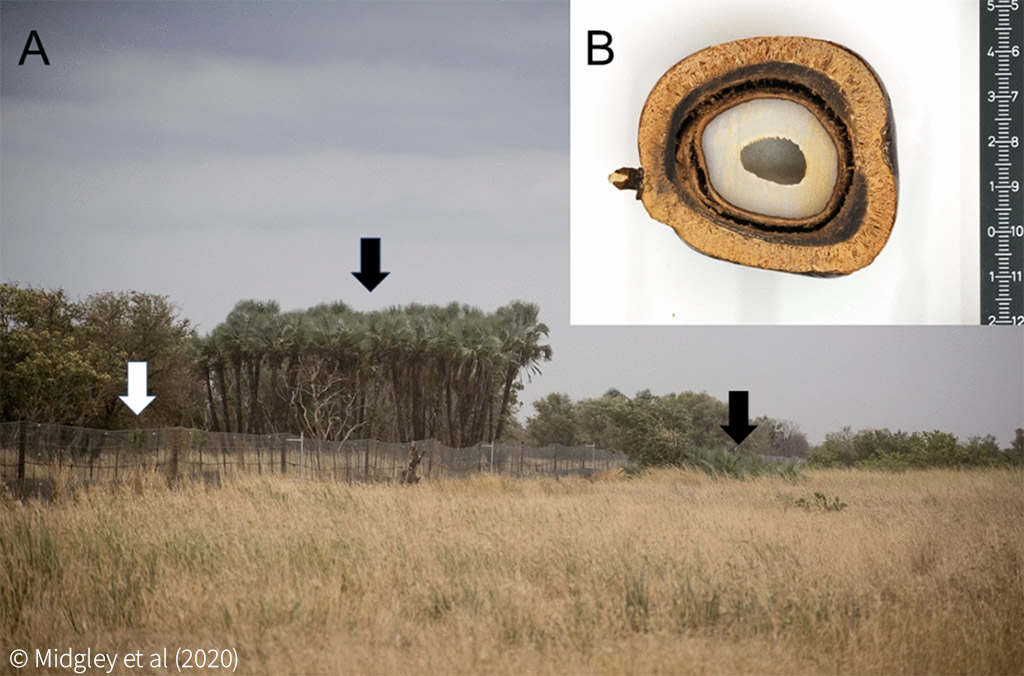
While acknowledging that their findings were limited to one plant species in one location, the authors believe that this consequence of elephant feeding is likely to be widespread and affecting other woody tree species, a conclusion supported by an extensive Google Earth survey. A previous study that compared the palms inside the same enclosure to those outside missed this negative impact on reproductive status, and the authors of the present study suggest that this is because the reproductive condition is not part of a routine assessment of the impacts of herbivory. As such, they suggest that managers need to consider this impact when evaluating the impact of elephant feeding patterns, even in species that appear prima facie to be unaffected or which increases in stem density. Due to the loss of their reproductive capacity, the authors describe these palms as “the living dead” of the Kruger National Park.
The full report can be accessed here: “Mass sterilization of a common palm species by elephants in Kruger National Park, South Africa“, Midgley, J., Coetzee, B., Tye, D., and Kruger, L., (2020), Scientific Reports
We all love elephants, and most of us love big trees - in this case, fan palms. How then should we feel about this study that says that Kruger elephants are in effect KILLING OFF these palm trees?
“Living dead” – elephants in Kruger NP are sterilizing palm trees, says research
Posted on August 24, 2020 by Team Africa Geographic in the DECODING SCIENCE post series.

Elephant feeding patterns are preventing fan palms (Hyphaene petersiana) from reaching full size and reproductive potential, says a new study.
Many plant species that are subject to elephant feeding are capable of resprouting, which makes evaluating the effects of elephant feeding more difficult because, while the height of plants may be reduced, they will still be present, often in high densities. While previous studies into the impact of elephant feeding have focussed on the presence, height or stem density of savanna plants, the authors of this study suggest that it is also essential to evaluate the reproductive condition of plants.
The management of elephant numbers in the Kruger National Park in South Africa, where the population has demonstrated a consistent increase in the last two decades, is a controversial subject. High numbers of elephants can result in the widespread conversion of woodlands to grasslands. Some species of plants, such as the baobab (Adansonia digitata) and several Acacia species are intolerant of consistent elephant feeding. Yet, other plant species rely on the presence of elephants for seed dispersal. The tolerance of many savanna plants in the face of elephant disturbance and their capacity to resprout from the base, stem or roots further complicates the debate, as conservation managers work to determine what constitutes ideal savanna vegetation. As a result, determining the carrying capacity of the KNP for elephants is extremely complex.

The researchers, in this case, chose to focus on the H. petersiana palm species because they are both browsed by elephants and their seeds are dispersed in this manner. The plant demonstrates prolific production of new stems in response to feeding damage and was previously believed to be resistant to elephant feeding damage because the stem densities of browsed plants were wider than those protected from elephant herbivory.
However, most plants need to reach a minimum size to be able to reproduce. Researchers compared palms within the Nwaxitshumbe enclosure (one of the rare antelope breeding camps where the plants have been protected from elephant feeding for several decades) with palm trees outside the enclosure, which had evidence of extensive elephant feeding damage. Of the 65 trees in the enclosure, 92% had reached maturity at heights of between 4-5.3m. In contrast, of the 75 palms surveyed outside the enclosure, not one had reached the necessary height for reproductive maturity, with most being over 2.5m short of the minimum. No seedlings were found either within or outside the enclosure. Outside the enclosure, this can be explained by the lack of reproductively mature trees. In contrast, the lack of seedlings inside the enclosure can be explained by the absence of elephants to aid in the dispersal and germination of the seeds.
The researchers point to three significant impacts of this mass sterilization. The first is that sterile plants cannot disperse seeds to shift their distribution range with moving climate zones, which is particularly serious in the face of climate change. The second is that without new young plants, the plant will eventually go extinct (though this particular palm species can live for over a century). The final concern is that the fact that immature plants do not produce flowers or fruits could have biodiversity implications for several animals such as vervet monkeys and pompilid wasps. The palm swifts were observed to be nesting only within the tall palms in the enclosure.

While acknowledging that their findings were limited to one plant species in one location, the authors believe that this consequence of elephant feeding is likely to be widespread and affecting other woody tree species, a conclusion supported by an extensive Google Earth survey. A previous study that compared the palms inside the same enclosure to those outside missed this negative impact on reproductive status, and the authors of the present study suggest that this is because the reproductive condition is not part of a routine assessment of the impacts of herbivory. As such, they suggest that managers need to consider this impact when evaluating the impact of elephant feeding patterns, even in species that appear prima facie to be unaffected or which increases in stem density. Due to the loss of their reproductive capacity, the authors describe these palms as “the living dead” of the Kruger National Park.
The full report can be accessed here: “Mass sterilization of a common palm species by elephants in Kruger National Park, South Africa“, Midgley, J., Coetzee, B., Tye, D., and Kruger, L., (2020), Scientific Reports
"Education is the most powerful weapon which you can use to change the world." Nelson Mandela
The desire for equality must never exceed the demands of knowledge
The desire for equality must never exceed the demands of knowledge
- Richprins
- Committee Member
- Posts: 76116
- Joined: Sat May 19, 2012 3:52 pm
- Location: NELSPRUIT
- Contact:
Re: The Impact of Elephants on Large Trees
Good writing! 
And a picture says a thousand words...
And a picture says a thousand words...
Please check Needs Attention pre-booking: https://africawild-forum.com/viewtopic.php?f=322&t=596
- RogerFraser
- Site Admin
- Posts: 6003
- Joined: Wed Sep 18, 2013 9:36 pm
- Country: South Africa
- Location: Durban
- Contact:
Re: The Impact of Elephants on Large Trees
Not sure of the location but looks like a Kruger road surface .
- Richprins
- Committee Member
- Posts: 76116
- Joined: Sat May 19, 2012 3:52 pm
- Location: NELSPRUIT
- Contact:
Re: The Impact of Elephants on Large Trees
Please check Needs Attention pre-booking: https://africawild-forum.com/viewtopic.php?f=322&t=596
- Lisbeth
- Site Admin
- Posts: 67592
- Joined: Sat May 19, 2012 12:31 pm
- Country: Switzerland
- Location: Lugano
- Contact:
Re: The Impact of Elephants on Large Trees
Nothing to eat there; it's a dead tree.
"Education is the most powerful weapon which you can use to change the world." Nelson Mandela
The desire for equality must never exceed the demands of knowledge
The desire for equality must never exceed the demands of knowledge
- Richprins
- Committee Member
- Posts: 76116
- Joined: Sat May 19, 2012 3:52 pm
- Location: NELSPRUIT
- Contact:
Re: The Impact of Elephants on Large Trees
Please check Needs Attention pre-booking: https://africawild-forum.com/viewtopic.php?f=322&t=596
- Lisbeth
- Site Admin
- Posts: 67592
- Joined: Sat May 19, 2012 12:31 pm
- Country: Switzerland
- Location: Lugano
- Contact:
Re: The Impact of Elephants on Large Trees
Elephants promote jumbo trees, boosting the carbon stores in Africa’s forests
by Malavika Vyawahare on 27 January 2023
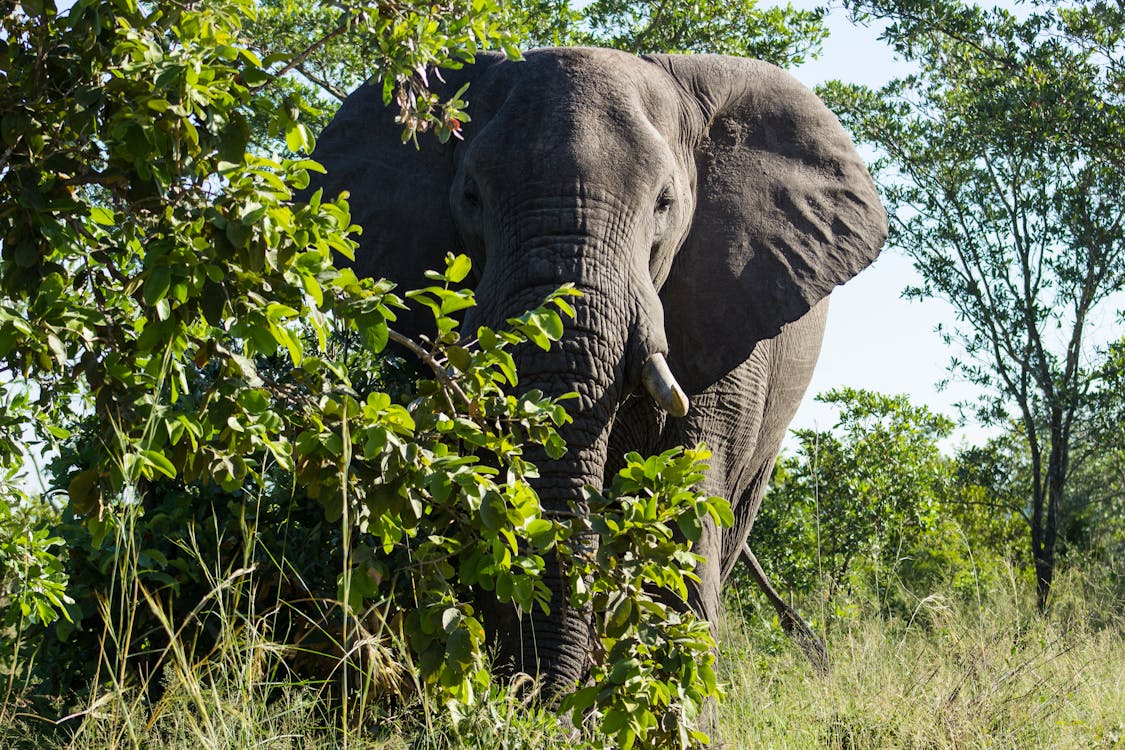
Forest-dwelling elephants browse on trees with low wood density, making space for bigger, heftier carbon-rich trees. Image by João Aguiar via Pexels (Public domain).
Previous studies have shown that Africa’s tropical forests store more carbon per hectare than Amazonian forests. But how they do so is still a puzzle. It turns out that elephants play an outsized role in the upkeep of healthy forests. New research shows that without these giant gardeners, forests in West and Central Africa would be poorer in biodiversity and carbon.
“We talk a lot about trees and soil, but a functioning ecosystem and its services also depend on animals,” said Fabio Berzaghi, lead author of a study published in the journal Proceedings of the National Academy of Sciences. The presence of large herbivores, particularly elephants, could be making a difference, the new paper suggests.
Forest elephants are smaller than their savanna counterparts but can still weigh anywhere between 2,000 and 6,000 kilograms (4,400 and 13,200 pounds). They have cavernous appetites; an adult can eat 100-200 kgs (220-440 lbs) of food daily, and there are about 350 plant species on their jumbo menu.
These pachyderms live in tropical forests of West and Central Africa, with their last strongholds in Gabon and the Republic of Congo. In wider conservation circles, forest elephants were recognized as a distinct species from their savanna-dwelling cousins (Loxodonta africana) only in 2021. While both kinds of elephants are endangered, forest elephant numbers have fallen by more than 60% in the last decade, mainly due to poaching and habitat destruction. Today, they inhabit only about a quarter of their historical range.
“Forest elephants are dramatically understudied compared to other megaherbivores, and this study contributes to a growing understanding of their enormous impacts on forest ecosystems,” John Poulsen, an ecologist at Duke University, who was not involved with the study, said.
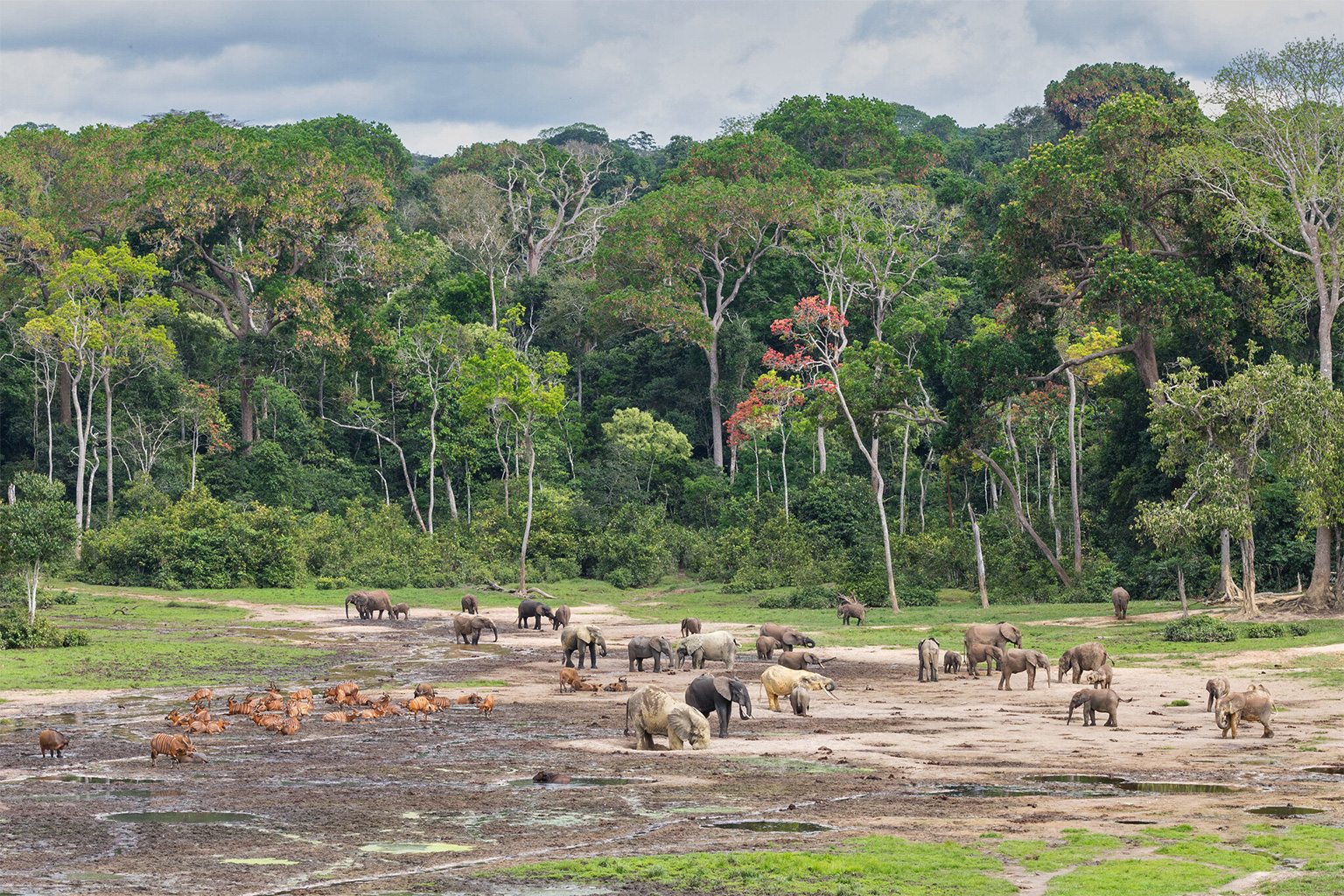
Forest elephants, lowland bongos and forest buffalos in Central African Republic. Elephants play an outsized role in the upkeep of healthy forests. New research shows that without these giant gardeners, forests in West and Central Africa would be poorer in biodiversity and carbon. Image by Gregoire Dubois via Flickr (CC BY-NC-SA 2.0).
Berzaghi and his colleagues analyzed elephant browsing habits at the Nouabalé-Ndoki National Park in the Republic of Congo, combining their findings with data from seven other sites in Africa. Across their range, forest-dwelling elephants browse on trees with low wood density and munch on fruits of trees that are high in wood density, the researchers found.
As they move through forests, foraging on leaves, fruit and tree bark, elephant herds allow larger trees to outcompete other species. Thinner, shorter trees are within reach for elephants, and many grow readily digestible leaves. Elephant foraging grounds are thus more abundant in heftier, taller trees that store more carbon.
The research team also probed elephant dung heaps collected over three years at Nouabalé-Ndoki for clues. The dung pile searches uncovered another reason elephants are important for carbon sequestration. Their large size and affinity for fruits mean they can disperse the seeds of some of the grandest trees.
The Mukulungu (Autranella congolensis) is a critically endangered tree species in the Congo rainforest. It can rise to 50 meters (164 feet) in height with a trunk that can run 2 meters (6.5 feet) across. Scientists believe elephants are the main dispersers of this tree’s seeds, which they ingest intact and later poop out in a heap of nutrient-rich dung.
“This study does a tremendous amount of work collating tree traits like nutritional value of leaves and wood densities,” Poulsen said, adding that the researchers were able to relate these tree traits to data on elephant browsing and seed dispersal from several sites in West and Central Africa.
Elephant dung could also be acting as plant fertilizer, promoting germination and plant growth, Berzaghi said, but to what extent this contributes to carbon storage is as yet unknown.

An African forest elephant heading into a rain forest in Gabon. Image by Rhett A. Butler/Mongabay.
Losing elephants would mean losing more than these majestic mammals; it would transform the forest structure. If forest elephants disappeared, low wood density tree species would proliferate to the detriment of bigger species. The study authors forecast that this could translate into a 6-9% loss in above-ground carbon storage.
Pinning down or explaining fluctuations in carbon stores is a tricky business. The estimate for how carbon stocks respond to disappearing elephants assumes that elephant-dispersed trees would disappear entirely along with the elephants.
Scientists can theoretically measure how carbon stocks have changed in areas where forest elephants no longer live. However, it is much harder to assess how much of this loss in carbon stores is due to local elephant extinctions. Some factors that drive out elephants, like logging and forest conversion, also deplete carbon stocks directly.
At LuiKotale in the Democratic Republic of the Congo, a team of researchers showed that more than three-quarters of the tree species dependent on elephants for dispersal failed to recruit enough young trees in their absence. Since changes in forest structure occur over generations, the researchers could only provide estimates for how much the carbon storage was likely to change as a result.
Despite this, the researchers argue that if African forest elephants reclaim their historical range, their contribution to reducing atmospheric carbon will be significant. “Protection of forest elephants, including in logging concessions and other exploited forests, is a critically important wildlife-driven mitigation response to climate change,” the study authors write.
Poulsen at Duke University who has investigated the effects of the loss of elephants on Central African forests said that the data collected by Berzaghi’s team would be “critical” to gauging the full impact of elephants on forest species composition and carbon stocks.
by Malavika Vyawahare on 27 January 2023
- The dietary habits of African forest elephants (Loxodonta cyclotis) promote the survival of large, high wood density trees better at storing carbon.
- New research finds that forest-dwelling elephants browse on trees with low wood density, making space for bigger, heftier carbon-rich trees.
- The elephants also act as seed dispersers for these larger trees.
- Cautioning that determining exactly what role local elephant extinctions have played in changing forest composition is tricky, the researchers argue that elephants may boost above-ground carbon storage in Central African forests by 6-9%.

Forest-dwelling elephants browse on trees with low wood density, making space for bigger, heftier carbon-rich trees. Image by João Aguiar via Pexels (Public domain).
Previous studies have shown that Africa’s tropical forests store more carbon per hectare than Amazonian forests. But how they do so is still a puzzle. It turns out that elephants play an outsized role in the upkeep of healthy forests. New research shows that without these giant gardeners, forests in West and Central Africa would be poorer in biodiversity and carbon.
“We talk a lot about trees and soil, but a functioning ecosystem and its services also depend on animals,” said Fabio Berzaghi, lead author of a study published in the journal Proceedings of the National Academy of Sciences. The presence of large herbivores, particularly elephants, could be making a difference, the new paper suggests.
Forest elephants are smaller than their savanna counterparts but can still weigh anywhere between 2,000 and 6,000 kilograms (4,400 and 13,200 pounds). They have cavernous appetites; an adult can eat 100-200 kgs (220-440 lbs) of food daily, and there are about 350 plant species on their jumbo menu.
These pachyderms live in tropical forests of West and Central Africa, with their last strongholds in Gabon and the Republic of Congo. In wider conservation circles, forest elephants were recognized as a distinct species from their savanna-dwelling cousins (Loxodonta africana) only in 2021. While both kinds of elephants are endangered, forest elephant numbers have fallen by more than 60% in the last decade, mainly due to poaching and habitat destruction. Today, they inhabit only about a quarter of their historical range.
“Forest elephants are dramatically understudied compared to other megaherbivores, and this study contributes to a growing understanding of their enormous impacts on forest ecosystems,” John Poulsen, an ecologist at Duke University, who was not involved with the study, said.

Forest elephants, lowland bongos and forest buffalos in Central African Republic. Elephants play an outsized role in the upkeep of healthy forests. New research shows that without these giant gardeners, forests in West and Central Africa would be poorer in biodiversity and carbon. Image by Gregoire Dubois via Flickr (CC BY-NC-SA 2.0).
Berzaghi and his colleagues analyzed elephant browsing habits at the Nouabalé-Ndoki National Park in the Republic of Congo, combining their findings with data from seven other sites in Africa. Across their range, forest-dwelling elephants browse on trees with low wood density and munch on fruits of trees that are high in wood density, the researchers found.
As they move through forests, foraging on leaves, fruit and tree bark, elephant herds allow larger trees to outcompete other species. Thinner, shorter trees are within reach for elephants, and many grow readily digestible leaves. Elephant foraging grounds are thus more abundant in heftier, taller trees that store more carbon.
The research team also probed elephant dung heaps collected over three years at Nouabalé-Ndoki for clues. The dung pile searches uncovered another reason elephants are important for carbon sequestration. Their large size and affinity for fruits mean they can disperse the seeds of some of the grandest trees.
The Mukulungu (Autranella congolensis) is a critically endangered tree species in the Congo rainforest. It can rise to 50 meters (164 feet) in height with a trunk that can run 2 meters (6.5 feet) across. Scientists believe elephants are the main dispersers of this tree’s seeds, which they ingest intact and later poop out in a heap of nutrient-rich dung.
“This study does a tremendous amount of work collating tree traits like nutritional value of leaves and wood densities,” Poulsen said, adding that the researchers were able to relate these tree traits to data on elephant browsing and seed dispersal from several sites in West and Central Africa.
Elephant dung could also be acting as plant fertilizer, promoting germination and plant growth, Berzaghi said, but to what extent this contributes to carbon storage is as yet unknown.

An African forest elephant heading into a rain forest in Gabon. Image by Rhett A. Butler/Mongabay.
Losing elephants would mean losing more than these majestic mammals; it would transform the forest structure. If forest elephants disappeared, low wood density tree species would proliferate to the detriment of bigger species. The study authors forecast that this could translate into a 6-9% loss in above-ground carbon storage.
Pinning down or explaining fluctuations in carbon stores is a tricky business. The estimate for how carbon stocks respond to disappearing elephants assumes that elephant-dispersed trees would disappear entirely along with the elephants.
Scientists can theoretically measure how carbon stocks have changed in areas where forest elephants no longer live. However, it is much harder to assess how much of this loss in carbon stores is due to local elephant extinctions. Some factors that drive out elephants, like logging and forest conversion, also deplete carbon stocks directly.
At LuiKotale in the Democratic Republic of the Congo, a team of researchers showed that more than three-quarters of the tree species dependent on elephants for dispersal failed to recruit enough young trees in their absence. Since changes in forest structure occur over generations, the researchers could only provide estimates for how much the carbon storage was likely to change as a result.
Despite this, the researchers argue that if African forest elephants reclaim their historical range, their contribution to reducing atmospheric carbon will be significant. “Protection of forest elephants, including in logging concessions and other exploited forests, is a critically important wildlife-driven mitigation response to climate change,” the study authors write.
Poulsen at Duke University who has investigated the effects of the loss of elephants on Central African forests said that the data collected by Berzaghi’s team would be “critical” to gauging the full impact of elephants on forest species composition and carbon stocks.
"Education is the most powerful weapon which you can use to change the world." Nelson Mandela
The desire for equality must never exceed the demands of knowledge
The desire for equality must never exceed the demands of knowledge
- Richprins
- Committee Member
- Posts: 76116
- Joined: Sat May 19, 2012 3:52 pm
- Location: NELSPRUIT
- Contact:
Re: The Impact of Elephants on Large Trees
Maybe in Central Africa, But down here they mutilate large trees and certainly prevent the growth of any new ones... 
Please check Needs Attention pre-booking: https://africawild-forum.com/viewtopic.php?f=322&t=596


